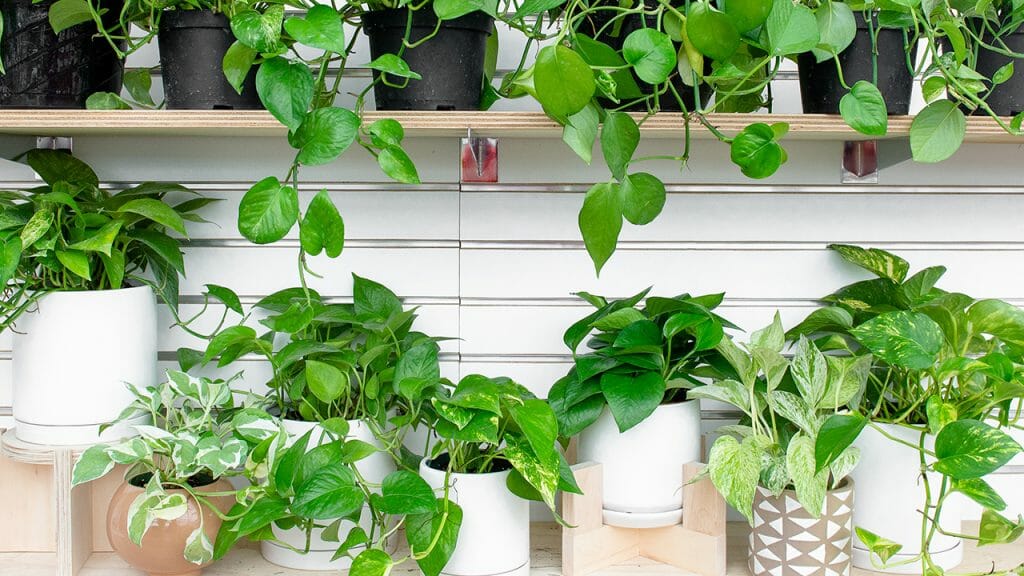We all know that sinking feeling when we think we have lost one of our precious plants. It can be very upsetting, especially when you have spent a long time caring for it. As a last-ditch attempt, you may try to revive your plant, but when is it too late to revive a plant?
This depends on what plant you are working with. In general, it is too late when a plant has dried out entirely and shows no sign of new growth.
While some plants are very delicate and may be too far gone, there are certain plants that you may be able to revive using some little tips and tricks.
In this article, we are going to help you figure out whether your plant can be revived and give you some tips on how to successfully bring it back to life.
When is it Too Late to Revive a Plant?
Whether a plant can be saved changes from species to species, but in general, they are too late to save when the flesh inside has dried out completely.
When caring for many plants, it can be tough to keep on top of how every single plant is doing. That is why it is essential to know precisely what environment each individual plant prefers.
These are a few signs to look out for that indicate an unhealthy plant:
- Wilting leaves
- Leaves and flowers dropping
- Leaning
- Brown leaf tips
- Slow growth
- Bad smelling soil
- Buds dropping before blooming
- Yellow leaves
- Black dots on the leaves
- Soil not holding water
These issues can be caused by several issues, including underwatering, overwatering, too much sun, and too much fertilizer.
However, we need to stress that it is vital to research your plant before making any interventions. Some plants will look dead for periods of the year and grow back when the weather is more favorable.
Let’s use hydrangeas as an example. During the winter, hydrangeas will go dormant. From the outside, it may appear that they are dead because the leaves and flowers will dry up and drop off, leaving the bare stems behind.
In some plants, this might mean that they are too far gone to save when in fact, they will grow back perfectly strong in the summer after a thorough pruning.
You really need to get to know all the plants so that you know what to look out for when they start to wilt and potentially die.
So, now you are faced with a plant that is looking a little worse for wear; how do you know what to do next?
Here are some signs to look out for that tell you that your plant can’t be saved.
- If you scratch the surface off a woody stem and there is no green flesh beneath it.
- Fungal infection has eaten away at too much of the plant.
- Insect damage has consumed too much of the plant.
- Brittle branches
- No new growth
- The soil remains moist days after you water; this indicates that the plant is not absorbing any water.
If you determine that, unfortunately, your plant is beyond reviving, we suggest putting it on your compost heap, so it doesn’t go to waste.
However, if your plant is showing a few signs of life, there are still a few things you can do to save it.
How to Revive a Plant
If it turns out that your plant is showing some signs of life, there are some things you can do to save it.
Follow these simple steps to revive your plants:
- Research your plant to determine what light, soil, or watering needs you aren’t fulfilling, which could be causing your plant to die. Remember that the cause may be pests, which will need to be dealt with according to their species.
- Diagnose what caused the initial stress. Based on the abovementioned needs, you can now determine what has caused your plant to look this way. The easiest way to tell is to look for sun damage and test the soil to determine its moisture levels.
- Remove dead flowers and leaves to give the plant more breathing room and redirect nutrients to new growth.
- Trim back the branches until you see green material. This will allow the roots to regain their strength without maintaining a canopy. Pruning also promotes new growth.
- Wait a month to see if your interventions have made any difference. This period allows the plant to gain its strength and put out new growth. You will have to wait with certain species until the weather gets warmer.
- Assess your plant to determine whether your interventions have worked.
- Maintain your care schedule until your plant has been nursed back to health.
Frequently Asked Questions
Should I cut dead leaves off my plant?
In general, it is a good idea to remove the brown leaves from your plant is a good idea.
Not only will this improve the overall appearance of the plant, but it will redirect nutrients to new growth and possible blooming rather than wasting it on dying leaves.
Can root rot be reversed?
While root rot cannot be completely reversed, it can be fixed.
We suggest removing the plant from the original soil and removing any affected root material. Repotting your plant in fresh, moist soil and ensure not to overwater from now on.
Conclusion
At the end of the day, some plants may not be salvageable, but that totally depends on the issue the plant is suffering from.
If you use our tips on diagnosing your plant and follow that with the steps to revive it, your plant should have every chance of surviving and coming back stronger than ever.
We hope this has given you all the skills you need to bring your plant back to life.




